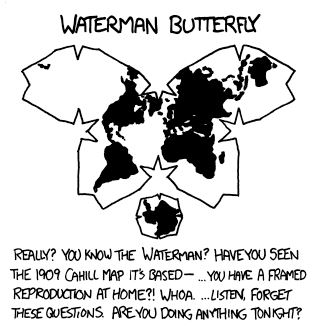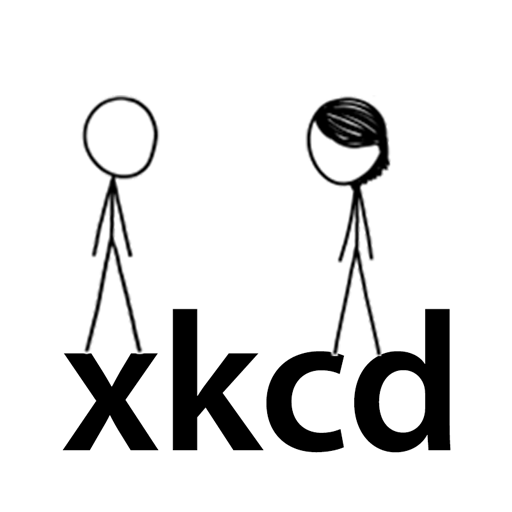Looks like literally nobody brought it up, so here goes… The Alternative: Helion Great YouTube video on the topic (Helion is at 6 minutes)
- 3 Posts
- 801 Comments

 3·15 days ago
3·15 days agoAny chance for people playing things like Factorio? Maybe Rift Breaker?
Yeah, the new pipeline is based HEAVILY on object inheritance and method/property calls so there is a paper trail for ALL of it. Also using Abstract Base Classes so future developers are forced to adhere to the architecture. It has to be in Python, but I am also trying to use the type hinting as much as humanly possible to force things into something resembling a typed codebase.
I literally told my boss that I was just going to rebuild the entire pipeline from the ground up when I took over the codebase. The legacy code is a massive pile of patchwork spaghetti that takes days just to track down where things are happening because someone, in their infinite wisdom, decided to just pass a dictionary around and add/remove shit from it so there is no actual way to find where or when anything is done.

 1·24 days ago
1·24 days agoThis argument really only holds water if the purpose of film and television ratings were to make commentaries on social moral trends.
Unfortunately they have an explicit and expressed purpose that is not that. They are a tool which is intended to inform and guide consumers on the content of a product ahead of purchase so they can make an informed decision. They should be locked to a standard which does not change, or all previous ratings should be reevaluated when the standard is changed. The media does not go away. And all ratings should be directly comparable, regardless of: when they were rated, who the “intended” audiences are, or what genres they belong to.
As a slightly hyperbolic example (pardon the minor straw man), imagine you are a Christo-Facist who, among other things, believes that nudity is a sin and you never want your children exposed to the evils of a bare breast. So you set your TV to only show G or PG movies. Then you find your child watching the 1984 rom-com Splash and boom, tiddies in a fish tank. It is PG because the PG standard allows for brief nudity (https://www.filmratings.com/).
They don’t apply the standards they have. They routinely make decisions based on backlash from Christo-Facist “Parent’s” groups which means that film ratings increasingly do not reflect the overall moralistic stance of the greater society.

 1·25 days ago
1·25 days agoThe MPAA has been a rather corrupt organization for a very long time. They don’t even bother following their own standards. They also exercise leverage over film content. Many movies live or die by their rating, so “parent’s” groups often lobby them or find their way onto the various boards to exert their will and censor content.

 2·2 months ago
2·2 months agoThank you kind lexical hero.
You dont have to since the set of all positive integers belongs to the set of all real numbers, you actually hit both tracks by just taking the lower track.
Hope things get better man, or whatevet idiot manager you have gets caught with his hand in the boss’s daughter’s cookie jar.
The Bhor’s model is at least a useful simplification of the atomic structure. What needs taught is that everything you learn before college and intensive narrow topical courses is simplified to the point of being incorrect with the hope that you get enough of an intrinsic understanding of the concept that the less simplified explanation you get next will make sense. I say this because it will still be simplified to the point of being wrong, but will be a step closer to the truth. This is the essence of education.
Elementary/middle school: ice is water that has frozen solid HS: ice is water that has lost enough energy that the molecules form a crystalline lattice. College: there are actually 19 or 20 kinds of water ice that have been verified, but as many as 74,963 might exist. Post-collegiate: There may be 74,963 kinds of ice, but I know one ICE we should definitely eliminate from this world.

 3·2 months ago
3·2 months agoYes. This is an artifact of a destigmatization coupled with better diagnostics for evaluating ASD. More people aren’t autistic, more people are being diagnosed and receiving counseling for coping with the neurldivergence in a cold and uncaring neurotypical world.
You mentioned the areas being countries. This leads me to believe that they are concave figures, correct? If you are unfamiliar, a concave figure is something that has a space that doubles back into the interior of the shape. So an o is convex, and a c is concave, as an example. Convex shapes are much simpler to find the area of. You can use a Riemann Sum as others have suggested. I would probably just pick a point inside the shape and do a bunch of triangles around with the point as an apex and the bases as two points on the edge of the surface, then sum up the areas of each triangle. You could even probably use a triangulation algorithm built into the engine to do this. (I am unfamiliar with the specifics of the Godot engine).
For concave shapes it becomes a little more complex. It has been mentioned that you can draw a bounding box around the shape, so that would allow you to calculate it using a numerical method. Take random samples inside the bounding box and count up the number that are inside the shape and divide by the total number of samples. The value you get will be the % of the area of the bounding rectangle that the shape takes up, so just multiply the easy area by the % and you will get an answer that is close enough. It may take a bit to get the sample count right, but it will get there. Try to make sure the samples are as uniform as possible. You could even scatter the sample points then relax them for a couple iterations before counting to increase accuracy without increasing samples.

 4·3 months ago
4·3 months agoThe word copulate has been around since the late 1400’s (before the colonization of North America by Europe) and Old English had the word hǽmed which dates back to the middle ages.
You are confusing euphemism with language and applying puritanical systemic manipulation to language. That is censorship and it does not mean that the words don’t exist in the language. Whole different can of worms.
Yes, it has been proven that language and having words to describe things changes the way the brain processes things. There are languages without a word to describe the color Blue, and in fact the people who speak that language struggle to differentiate it from green when tested. Once teaching them a language which includes a word for the color, eventually their brain begins to be able to differentiate it. https://www.bbc.com/future/article/20180419-the-words-that-change-the-colours-we-see

 1·3 months ago
1·3 months agoI have a real issue here too. Though mine more centers around the purchase of IP to bury it because it would be competition. How many amazing creations that would benefit humanity and make all of our lives more livable are buried in archives at these big corpos?
This is what I would like to see fixed, in the most aggressive way possible. I want a clock on the ownership to bring a product to market based on the purchased patant and if that clock runs out, ownership reverts back to the creator.
There is a species of fungus that parasitically infects ants and after killing them zombie puppets their bodies to the tops of trees so they can sprout and spore to give them the best spread possible on their spores.
Yes, yes, but we live in this timeline so the research that will be done into the mediating factors will 100% become a “breast enlargement therapy” in health spas should it even remotely be found to be repeatable, controllable and safe be damned.
I made this comment on a previous post. Vibe Coding is to Coding as Previsualization (Previs is to Visual Effects. (Previs description) A quick slap job that is used to make sure timing is correct, on set assets will all work, and to communicate to artists, directors, producers, and on-set operators what is expected. It is entirely separate from the final product and nothing ever crosses the barrier between Preproduction and Production.
I have seen like 2 movies where the hacker just ran a script and danced around the room until the progress bar got to the top, then he hit a couple inputs and ran another script and went back to dancing. It was so surreal to see something so much closer to real than the feverish hammering in a keyboard.
God, I literally cannot choose. That list is probably my perfect list of scientific figures in history. Aside from Edison, he can burn in hell.
The only ones I might add would be Goodenough and Gauss.






No idea why I am getting down voted. Helion’s tech is a great alternative to steam for generating electricity from fusion reactions.